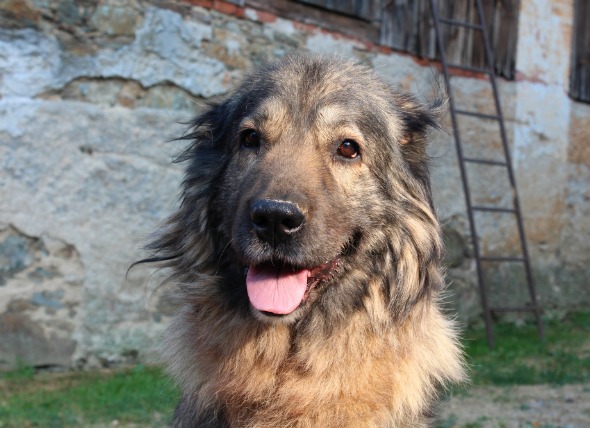There are numerous kinds of ticks spread all around the world, but the most typical ones include black-legged ticks, American dog ticks, brownish dog ticks, lone star ticks, Rocky Mountain Wood ticks, Gulf Coast ticks, and also wintertime ticks.
Various types of ticks are already bringing illnesses to their human and also pet hosts. These kinds of ticks stick firmly to the skin of the host, suck blood, and sometimes even stay on the skin unseen while feeding slowly for many days. This gives them enough time to transmit various diseases to their hosts, such as humans. To assist you identify ticks, get rid of them, and avoid yourself from getting infected with the illnesses they bring, you should be mindful of the following well-known kinds of ticks:
Black-legged ticks
These kinds of ticks are also referred to as deer ticks. They've black legs, long mouths, and they measure approximately one-third inch long. Females, that have red bodies, are generally larger than males which have black or dark brown bodies. Black-legged ticks are generally found in grassy, woody, and shrubby areas especially in North-eastern, South-eastern, as well as Midwestern states. They typically rely on bears and also deer as their hosts, as well as humans, sometimes transporting with them particular bacteria. These famous Lyme disease ticks also carry other diseases to their human hosts including babesiosis, anaplasmosis and also tick paralysis.
American dog ticks
A different well-known type of ticks is the American canine tick. They've glossy, dark-brown shells, and they measure about one-eight inch long. The male types have silvery lines on the back of their own heads, while the females have a large silvery dot on the identical spot. These types of ticks host on dogs and other animals, and even humans. Ailments they carry involve Rocky Mountain spotted fever, tick paralysis, and also tularemia.
Brown canine ticks
These ticks, referred to as Kennel ticks, are light brown in colour and are flat, resembling a guard when enlarged, particularly after feeding. While these types of ticks have several animals as their hosts, they like to stick to dogs. They seldom host on human beings, but once they do, they could also trigger Rocky Mountain spotted fever. As opposed to other kinds of ticks, they have the chance to survive indoors, that is why you often observe them in kennels or dog houses, as well as in houses where puppies are found.
Lone star ticks
Lone star ticks acquired their name from the white spot on the center of the female's back that appears like a star. These types of ticks are around one-eight inch long and are dark brown in color. Even though they've longer mouths and also legs, they are usually mistaken as deer ticks. They are usually found in the Eastern and also South-eastern states and are more predominant between April to July. If they feed on humans, these kinds of ticks could take along with them illnesses, such as Rocky Mountain spotted fever, ehrlichiosis, tularemia, and transmit a few bacteria associated with the main cause of Lyme ailment.
Winter season ticks
These ticks are large and differ from reddish-brown to grayish-brown in colour. They usually feed on deer, horses, cattle, along with other large mammals but rarely feed on human beings. They are also unfamiliar to send out any disease to humans.
Rocky Mountain wood ticks
These kinds of ticks, as the name indicates, are usually present in Rocky Mountain states and generally spread Rocky Mountain spotted fever to humans. They are a little larger than American dog ticks, having a thicker, sturdier body. Rocky Mountain wood ticks also like larger animals as their hosts, as well as humans.
Gulf Coast ticks
Finally, there are Gulf Coast ticks, that are typical in regions across the Gulf of Mexico, and also near the Atlantic coast. They also appear like American dog ticks but with extended legs and larger mouths. They carry with them spotted fever to people, and also to birds, rodents, and other wildlife.
Although several ticks result in several illnesses to human beings, it's very important to take extra care when heading outdoors. If you wish to go camping and hiking, be sure you put on a hat, long-sleeve top, jeans, as well as socks and boots to guard yourself from ticks. Prevention is always better than cure.

 Dog Ear Infection - Symptoms and Treatments
Otitis Media and Otitis Interna in Dogs
Oti
Dog Ear Infection - Symptoms and Treatments
Otitis Media and Otitis Interna in Dogs
Oti
 Ringworm in Dogs
Dermatophytosis is the medical term for a
Ringworm in Dogs
Dermatophytosis is the medical term for a
 The Utmost Effective Ten Most Well-known Pup Breeds Throughout England
But are you aware that the dogs loyalty to his master can
The Utmost Effective Ten Most Well-known Pup Breeds Throughout England
But are you aware that the dogs loyalty to his master can
 Rapid Heart Rate in Dogs
Sinus Tachycardia in Dogs
Sinus tachycardia (ST)
Rapid Heart Rate in Dogs
Sinus Tachycardia in Dogs
Sinus tachycardia (ST)
 Cardiac Arrest in Dogs
Cardiopulmonary Arrest in Dogs
Cardiac arrest (al
Cardiac Arrest in Dogs
Cardiopulmonary Arrest in Dogs
Cardiac arrest (al